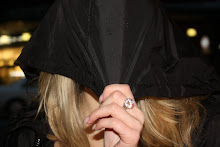

Last Monday I went to Kyoto to Kiyomizudera. I got a chance to have a glimpse at a traditional Japanese wedding. I have seen the part where photographer was taking pictures of the bride and groom. There also were wedding planners and before photo was taken they made sure that the couple looked perfect. They paid a lot of attention to every minor detail. The couple was fixated on the presentation of the clothes and their stance. I thought it was a bit too much, it even seemed obsessive. It again proved to me that Japanese people are perfectionists. I also thought that the wedding ceremony was very private with only family and close friends being there.
I went to Kyoto with two of my Japanese friends. And they were just as excited as I was to see the wedding. I asked them what kind of wedding they would like to have and both of them said Western style wedding. I asked them why and they said that kimono dress doesn’t look good on them and that they want to wear a Christian style dress and have their wedding in a Christian church even though they are not Christians.
A few pictures I put up show the Japanese traditional wedding dress the couple was wearing. The bride was wearing a white wedding kimono dress, which I later found out is called shiro-maku (shiro-white and maku-pure). The bride’s hair was styled in the traditional style decorated with beautiful combs and accessories. There is also a picture of the bride and groom standing under an Ai Ai Gasa-the love umbrella.
I went to Kyoto with two of my Japanese friends. And they were just as excited as I was to see the wedding. I asked them what kind of wedding they would like to have and both of them said Western style wedding. I asked them why and they said that kimono dress doesn’t look good on them and that they want to wear a Christian style dress and have their wedding in a Christian church even though they are not Christians.
A few pictures I put up show the Japanese traditional wedding dress the couple was wearing. The bride was wearing a white wedding kimono dress, which I later found out is called shiro-maku (shiro-white and maku-pure). The bride’s hair was styled in the traditional style decorated with beautiful combs and accessories. There is also a picture of the bride and groom standing under an Ai Ai Gasa-the love umbrella.






